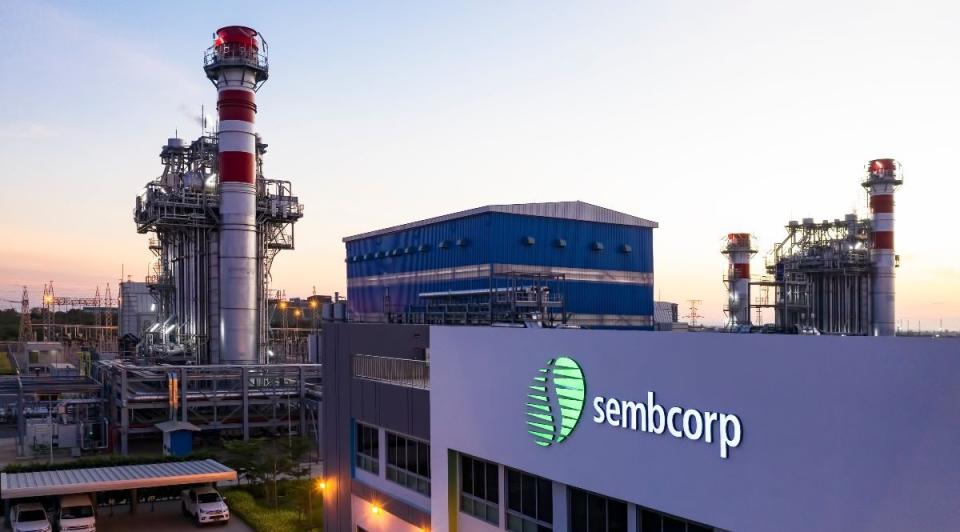EMA’s energy price cap to have ‘minimal impact’ on Citi’s forecast for Sembcorp

Citi analyst Jame Osman has reiterated his "buy" rating for Sembcorp with an unchanged TP of $5.98.
Citi Investment Research has maintained its “buy” rating for Sembcorp Industries U96 despite Singapore’s Energy Market Authority (EMA) implementing a temporary price cap on wholesale power from July 1, with an unchanged target price of $5.98.
In his note dated June 21, analyst Jame Osman says that Citi’s fundamental view on Sembcorp remains “intact” despite concerns over the EMA’s price cap, which resulted in the energy player’s share price experiencing a 9% drop on June 20 — a “knee-jerk reaction” to EMA’s announcement on the same day.
He adds that some investors took the chance to take profit given Sembcorp’s strong year-to-date outperformance.
The EMA’s energy price cap is intended to act as a guardrail to restore the orderly functioning of the electricity market during times of extreme price volatility, says Osman.
He explains that the temporary price cap does not operate at a fixed rate, but rather is set and refreshed based on the long run marginal cost of combined cycle gas turbine generation, which includes both fuel and non-fuel components. This is then applied to a “dynamic multiplier”, which depends on prevailing gas spreads.
The price cap is activated when the moving average price exceeds the threshold for a consecutive period of 24 hours.
Osman views the policy as a move to protect independent electricity retailers which are wholly reliant on purchasing power from the wholesale market, with the objective of ultimately improving stability of the value chain for the end consumer.
The analyst says the energy price cap will potentially limit “supernormal” upside to spark spreads for power generation companies, particularly when input costs are lower compared to spot prices.
“Considering that the Singapore power market has been transitioning to an ‘Open Electricity Market’ model over the past decade or so, the proposed price cap policy is admittedly surprising as price intervention has traditionally not been an approach, as it perceivably creates a crutch mentality among consumers,” says Osman.
According to him, the Singapore government has historically deployed subsidies and rebates to help lower income consumers, while establishing a regulatory framework largely to govern — and encourage — market competition. “We expect the EMA to further fine-tune its approach when the temporary price cap is due for review, likely sometime in 2025,” he adds.
In the EMA’s simulation studies of the effects of the price caps on spot prices through backtesting against the January 2021 to April 2023 period, the average reduction in Uniform Singapore Energy Price (USEP) due to the temporary price cap was 8.1% between January 2021 and September 2022, and just 3.2% between October 2022 and April 2023.
On balance, however, he sees limited downside risk to Citi’s existing earnings forecasts for Sembcorp, noting that he retains his positive view of Sembcorp’s fundamentals given current market expectations for normalising electricity prices near term, as well as the company’s strategy to contract the majority of its capacity.
Osman says that while Sembcorp does not provide disaggregated disclosure on country revenues or revenue types, he estimates that an 8% reduction in spot tariffs, assuming all other factors remain equal, would pose an estimated 13% downside risk to Citi’s FY2023 patmi forecast for Sembcorp and an estimated 15% downside to its target price from lower spot electricity sales.
His target price of $5.98 is derived from a sum-of-the-parts valuation given Sembcorp’s different operating segments. Given current expectations for earnings contribution from its conventional energy segment to normalise over FY2022 to FY2025E, Osman says he is forecasting the proportion of earnings from its renewables segment to increase to 46% by FY2025, compared to 19% in FY2022.
As at 1.46pm, shares in Sembcorp were trading 22 cents or 4.27% up at $5.37.
See Also:
Click here to stay updated with the Latest Business & Investment News in Singapore
Singapore to end 3,000% power price spikes that sank companies
Brokers' Digest: ESR-LOGOS REIT, CDLHT, Marco Polo Marine, Sembcorp Industries, DBS Group Holdings,
Pullback in Venture Corp shares overdone, enhanced opportunity to accumulate: Citi
Get in-depth insights from our expert contributors, and dive into financial and economic trends

 Yahoo Finance
Yahoo Finance 